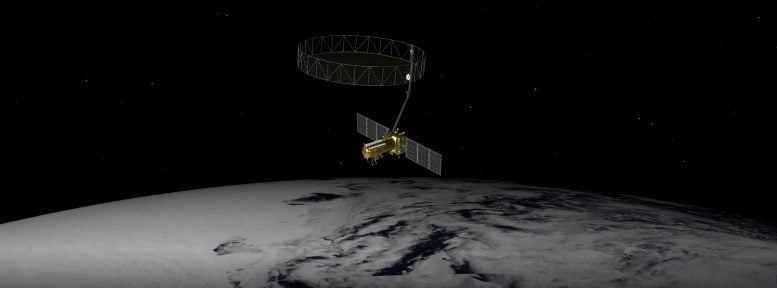When it comes to exploring our planetary neighbours, Mars tends to get a lot of the attention. For one thing its easier to explore as the environment is far less hostile than other planets but it also offers the tantalising possibility of finding evidence of primitive life, past or present! Venus however is still a fascinating world and perhaps one that gives us a glimpse into our future if we don’t do something to check global warming. A team of scientists are proposing an official Venus Exploration Program for NASA similar to the existing Mars program.
Venus is the second planet from the Sun and has often been referred to as Earth’s twin! This is chiefly due to its similar size and composition however, despite these similarities, Venus and Earth are worlds apart! Its thick carbon dioxide atmosphere traps heat causing the surface temperature to rocket to just under 500 degrees. It’s surface is hidden beneath thick clouds of sulfuric acid, and its atmospheric pressure is about 90 times that of Earth’s. There is no doubt, Venus is not somewhere you would want to go on your cosmic holidays. Despite all of this, and despite the challenges, Venus does remain a fascinating place to study.

Following a recommendation that NASA should develop scientific exploration strategies as it has for Mars; VEXAG, the Venus Exploration Analysis Group, was established. This community-driven initiative has been established by NASA to facilitate and provide scientific and mission support and planning to the exploration of one of our nearest planetary neighbours. VEXAG is composed of researchers, planners and engineers whose goal is to assess various scientific objectives to inform NASAs future mission to Venus.

The VEXAG mission to develop a new Venus exploration strategy by reflecting upon the 2021 selections of the VERITAS (an orbiter designed to reveal how the paths of Venus and Earth diverged, and how Venus lost its potential as a habitable world,) DAVINCI (to explore whether the inhospitable surface of Venus could once have been a twin of Earth,) and EnVision (studying atmosphere of Venus) missions.

There are still lots of unanswered questions surrounding Venus from how it loses heat to how geologically active it is and how has the atmosphere evolved over time. These and other questions are the focus of the exploration strategy and it is the VEXAG objective to look at the scientific, technological and programmatic advances required to address them.
The report is comprehensive and offers a much needed assessment of the exploration of Venus. The existing slated and previously highlighted missions to Venus will likely launch during the early part of the next decade provide for an opportunity to address some of the outstanding questions.
It will take some months before the measurements provide the much needed insight however additional missions are needed to address all of the remaining questions. It is now down to organisations like NASA and its international peers to take the next step to develop a new strategy for the exploration of Venus.
Source : A New Strategy for the Exploration of Venus








Leave a Comment